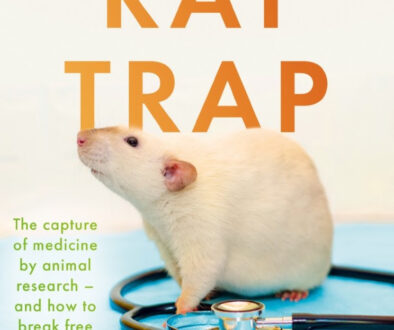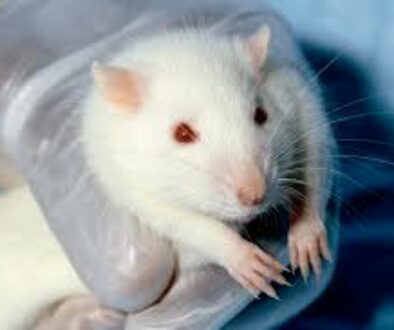Tap water: you said “potable”?
Tap water is deemed safe to drink if the concentration of dangerous chemicals within it does not reach a certain threshold. But these thresholds are simplistic, outdated and irrelevant. [article computer-translated from the French]
Tap water may be subject to constant surveillance, but we are ill-informed as to what’s in it. Instead, we swim in the dark between missing data in official publications and misguiding statements on the toxic effects of chemicals. It is high time to demand more seriousness from those authorities in command of something as vital as the water we drink every day.
The Villefranche-sur-Saone Water Collective  invited me to lecture in their city last October 21 (see our Antidote Europe there was or will be!). So I continued my literature on the subject that worried the Collective, namely the quality of tap water in this city. And I found, indeed, some cause for alarm. The Departmental Directorate of Health and Social Work (DDAS) performs several times a year on various health checks on the network distribution of drinking water and on samples taken at the tap. These checks are often carried out as “duplicate” by municipalities or municipal associations. All data collected is required to display in city hall, where the public can view them. This apparent transparency, however, suffers from a few gray areas, “omissions”. Thus, examination of the data display in a town north of Lyon average, and comparing these results with those of a group concerned with the quality of drinking water, shows some differences. For example, more than half of the pesticides from the list of the Collective are not on the official list — the 29 pesticides from the official list, we have the data for a single. For the remaining 28, the list merely indicates that their concentrations are below a certain threshold. However, this threshold is a thousand times higher than the precision of the measuring equipment used. For a person who would consult this list unsuspecting tap water is clean to a single pesticide closely. We can continue to drink it without fear.
invited me to lecture in their city last October 21 (see our Antidote Europe there was or will be!). So I continued my literature on the subject that worried the Collective, namely the quality of tap water in this city. And I found, indeed, some cause for alarm. The Departmental Directorate of Health and Social Work (DDAS) performs several times a year on various health checks on the network distribution of drinking water and on samples taken at the tap. These checks are often carried out as “duplicate” by municipalities or municipal associations. All data collected is required to display in city hall, where the public can view them. This apparent transparency, however, suffers from a few gray areas, “omissions”. Thus, examination of the data display in a town north of Lyon average, and comparing these results with those of a group concerned with the quality of drinking water, shows some differences. For example, more than half of the pesticides from the list of the Collective are not on the official list — the 29 pesticides from the official list, we have the data for a single. For the remaining 28, the list merely indicates that their concentrations are below a certain threshold. However, this threshold is a thousand times higher than the precision of the measuring equipment used. For a person who would consult this list unsuspecting tap water is clean to a single pesticide closely. We can continue to drink it without fear.
That actually contains water from the tap? But the reality is sadly different. On the one hand, the official list is silent on other pesticides (there are a total of more than 800 authorized: cons insects, worms, fungi, “bad” grass, spiders, etc..) including those found by the collective that counts among its members at least a qualified hydrogeologist. Willful default or neglect? Anyway, if you look at the town hall sanitary control of your tap water, be aware that the displayed list of pesticides does not necessarily mention all pesticides actually present in your water. The official list also forgets to mention the pesticides, but not allowed (only one for which data has been indicated is prohibited since 2004!). Moreover, more than half of those mentioned on the official list but below a certain threshold are also not allowed. Finally, this list does not list the chemical function of pesticides (organophosphates, carbamates, triazines, urea derivatives of …) or toxic activity associated (for the above functions, respectively neurotoxic, affecting the respiratory chain, inhibitor of photosynthesis …). It turns out that 90% of pesticides in drinking water (and official lists of the collective) are herbicides. They are already in the water of two rivers passing through the city concerned, and in the water table in which water is pumped tap (one pumping station is within walking distance of the One of these streams, industrial chemical facilities are close to other catchments). Even if you’re not a chemist or an expert warned of “plant” these data may help you know what you are exposed and, with the help of the Internet, you realize the risks to your health. The site of Antidote Europe, for example, publishes the toxicogenomics evaluations of health risks associated with a number of pesticides.
Toxic effects mislabeled. We come to the fuzzy results of pesticides at concentrations below certain “threshold” administrative dangerousness. This threshold concept is the subject of three major criticisms:
1. The thresholds observed in animals: are they reliable for humans?
2. Are there any effects of a toxic substance to man below this threshold?
3. What are the toxic effects for humans to mixtures of substances, some of which would be below a “threshold” toxicity?
We do not know precisely whence come these “thresholds” … Probably estimates of “experts” made decades ago based on toxicity studies of “animal models”, type “lethal dose 50 (LD50 ), and engraved in stone for “administrative” … to remain there until the end of time if no one calls into question!
Our readers know what to think and the LD50 and more general results on these so-called “models” is purely illusory, unnecessary and misleading. We do not throw stones at those experts, they had perhaps made at best knowledge provided by the methods of the time. But since they rely on a good two decades in the “reservations” dusty museums, and the “threshold” derived from these methods should be there with them. These thresholds indicate lethality simply the maximum that can support an animal (usually rodents) before dying. Deduct the lethal threshold for a rodent that applicable to man is a mere deception, because, as a professor of toxicology pointed out recently, “We are not 70kg rats!” [1]
Moreover, these acute toxicity data (immediate) reveal nothing about the effects on animals of a substance to lower doses. Yet it is precisely the effects of low doses of interest because they may occur in humans through long-term and serious disorders, often responsible for premature death. They are obviously completely out of reach of the animal test. Even the study of cytotoxic human cells, which simply determines the concentration of a substance killing these cells (lethal dose), reveals nothing about the possible toxic effects of this substance at lower concentrations. Toxicogenomics [2] by cons is, she is perfectly able to show that even at low concentrations well below the lethal dose, a substance may force the cell to engage in pathological pathways clearly identified. These doses can be infinitesimal, a characteristic of substances that mimic the effects of hormones, which is the case for many probably the majority of pesticides. The consumer has the right to know what risks it is exposed to toxic
You can act:
- Ask your municipality thus the complete list of pesticides detected in tap water, and the data in the best performance of measuring devices, notwithstanding the “threshold” of government (see below). For example you can notify the responsible “health” of the municipality today, conventional methods of measurement (mass spectrometry coupled to gas chromatography or capillary electrophoresis, for example) can detect and identify a pesticide throughout the thousandth of a billionth of a gram per liter (picograms / L).
- also requires chemical functions of these pesticides are reported, and their toxicological activities for their target “pesticides.”
- Insist that the impacts of these pesticides on human health are sought.
- Insist that once and for all, the authorities in charge of public health assess by scientific methods, reliable man as toxicogenomics on human cells in culture, the effects on our health of the 842 pesticides allowed or forbidden, but persistent in our environment, and they make this information available to all, with clarity and without jargon.
.. Better still pending!
Finally, we must confront the problem of toxic effects of mixtures of chemicals in our body. Studies of high-profile a few years ago, made by WWF, for example, have shown that we all have dozens of synthetic chemicals in our bodies and our cells. These substances can they neutralize or otherwise become more aggressive in contact with each other? It is necessary to determine. Take, for example, a mixture of 10 Chemicals. We should study these materials with combinations of 2 by 2, and 3 by 3, etc.. up to 10 or a thousand combinations in total. It is of course quite out of range of test animals, but it is doable by toxicogenomics. And that’s the whole purpose of our Cancer Test project. We will soon make you aware of how to proceed and concrete results that we obtained as part of our collaboration with a laboratory in the UK.
REFERENCES
(1) Declaration of Professor Thomas Hartung, former Director of the Centre for the Validation of Alternative Methods (ECVAM) in the weekly scientific journal Nature on 9 July 2009. He added: “We absorb substances differently, we metabolize differently […] and we are exposed to a multitude of environmental factors. […] Comparing the dose of a substance that is lethal to 50% of rats subjected to the test (LD50) and lethal concentration of the substance in the blood of humans has shown a weak correlation. “The human data used for this study were obtained from poison control centers.
(2) Toxicogenomics is a method that determines how our genes react in the presence of a chemical. It involves exposing human cells in culture to the test substance and then measuring gene expression through DNA microarrays. All these operations are fully controlled in several laboratories around the world and pose no ethical concern. To answer a question that we are frequently asked, we specify that the cells used are not derived from human embryos.


